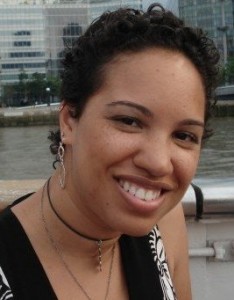This week we are join by Dina Bailey. The Director of Exhibits and Visitor Experiences at the National Underground Railroad Freedom Center. Dina will be examining the importance of diversity and inclusion in our institutions.
Diversity & Inclusion by Dina Bailey:
Institutions who tie diversity and inclusion to their strategic plans (and so programs and exhibitions) ultimately increase effectiveness and the visitor experience – and who doesn’t want to do that?
What is the difference between diversity and inclusion? Diversity has to do with being different, having variety. Inclusion has to do with one being included in a larger group or structure. Certainly diversity and inclusion are not synonyms; and yet, they go so well together! It can be a complementary relationship.
How do diversity and inclusion work in museums? And, how do they work specifically in museum education? We all talk about the importance of diverse target audiences. We attempt to be increasingly more innovative in order to include a variety of learning styles, demographics, and subject matter within one institution. We want diverse staffs, diverse boards, diverse visitors, and inclusive learning environments. It’s a tall order, but I believe museums are up to the challenge!
It’s always going to be a work in progress – and I hope you all are happy (even excited!) about that. It takes conscious and consistent thought as well as hard work to be effective and provide meaningful experiences and lasting memories. It also takes high expectations and a lot of accountability. Is all of that even possible? I certainly think so!
Let me give you just one example. In the early months of 2010, the National Underground Railroad Freedom Center hosted an exhibition titled, Without Sanctuary: Lynching Photography in America. As you may imagine, this was a complex and controversial exhibition. There were innumerable meetings about target audiences, safe zones and dialogue, and culturally sensitive programming to name a few key discussions. Rich Cooper, our Manager of Interpretive Services and Visitor Experiences, became an essential team member as he led the training of staff, docents, and volunteers not only in terms of content, but also in terms of group dialogue standards. With the participation of graduate students from Northern Kentucky University and great collaboration from Freedom Center staff and volunteers, Without Sanctuary became the museum’s most diverse, most inclusive and certainly most overall meaningful temporary exhibition the museum had had to date.
We must all search out experiences that make us just a little uncomfortable. We must strive to use best practices that produce meaningful learning lessons. We must hold each other accountable in order to consistently maintain high standards in both diversity and inclusion within our museums. And, in doing so, we will become increasingly more effective, focused and have more impactful visitor experiences.
At the Freedom Center, we’ll continue to strive toward museum excellence in the areas of diversity and inclusion with our next exhibition, Women Hold Up Half the Sky – what program, exhibition, or initiative are you working toward? We have a saying at the Freedom Center that I hope you take to heart – There is a spark within each of us. Fan the Flame.
Dina Bailey is a life-long educator, working in both formal and informal educational environments. She has worked with the collections and exhibitions of the National Underground Railroad Freedom Center since 2008. Her position encompasses all aspects of exhibition and collection management for the Freedom Center’s changing and permanent galleries. She is all responsible for the development of new exhibitions. She is most recently proud of being the curator for the Freedom Center’s permanent exhibition, Invisible: Slavery Today, as well as curating the changing exhibition, Without Sanctuary: Lynching Photography in America. She has an undergraduate degree in Middle/Secondary Education, English; a Masters of Anthropology of Development and Social Transformation; and, a certification in Museum Studies.




